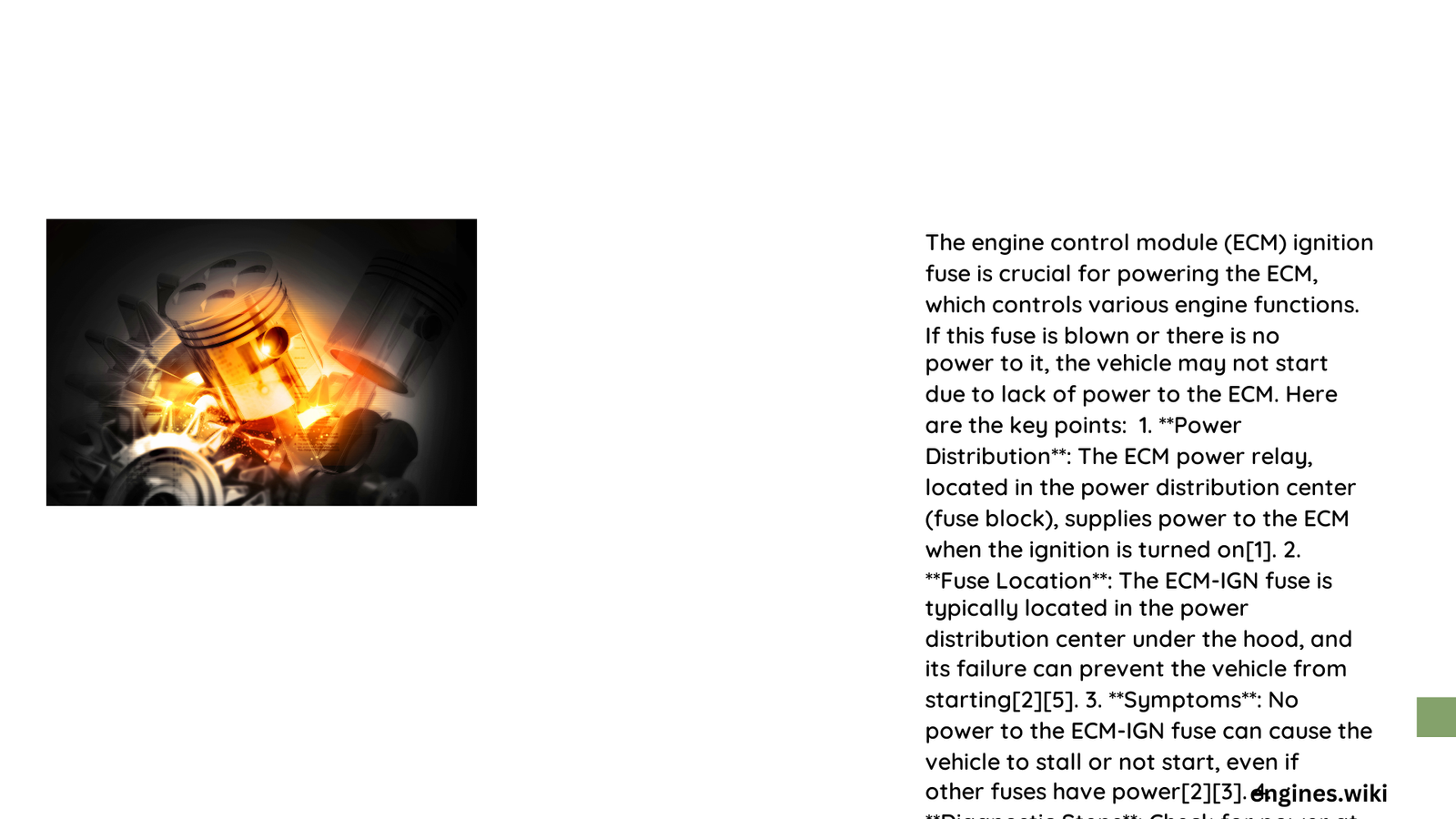The engine control module ignition fuse is a critical electrical component that protects and regulates power distribution to your vehicle’s engine management system. This small but essential part prevents electrical overloads, ensures stable performance, and safeguards complex electronic circuits from potential damage. Understanding its function, location, and maintenance can help vehicle owners prevent unexpected electrical failures and maintain optimal engine performance.
What is an Engine Control Module Ignition Fuse?
An engine control module (ECM) ignition fuse serves as a protective barrier in the vehicle’s electrical system, specifically designed to interrupt power flow during electrical anomalies. Its primary functions include:
- Preventing electrical circuit overloads
- Protecting sensitive electronic components
- Maintaining stable voltage supply to critical engine systems
Key Characteristics of ECM Ignition Fuse
| Characteristic | Description |
|---|---|
| Location | Engine compartment fuse box |
| Purpose | Electrical circuit protection |
| Typical Amperage | 10-20 amperes |
| Replacement Frequency | As needed during electrical system diagnostics |
Where to Find the Engine Control Module Ignition Fuse?

Locating the Fuse in Different Vehicle Models
For most vehicles, the engine control module ignition fuse can be found in:
- Engine compartment fuse box
- Under-dashboard fuse panel
- Near the battery terminal
- Close to the main electrical control center
Specific Vehicle Example: 2014 Chevrolet Equinox
In a 2014 Chevrolet Equinox, the ignition-related fuse is typically located in the engine compartment fuse box. Look for:
- Fuel System Control Module Ignition relay
- Engine Control Module Battery fuse
- Specific numbered fuse positions related to electrical systems
How to Diagnose a Faulty Engine Control Module Ignition Fuse?
Symptoms of Potential Fuse Failure
Recognizing potential issues can help prevent more significant electrical problems:
- Intermittent engine starting
- Unexpected electrical system shutdowns
- Dashboard warning lights
- Erratic engine performance
Diagnostic Steps
- Visual Inspection
- Check for visible fuse damage
- Examine fuse box for corrosion or moisture
-
Use a multimeter to test fuse continuity
-
Electrical System Testing
- Measure voltage across the fuse
- Check for proper grounding
- Verify electrical circuit integrity
What Tools Are Needed for Fuse Replacement?
Essential tools include:
- Multimeter
- Fuse puller
- Replacement fuses
- Protective gloves
- Flashlight
- Vehicle service manual
Replacement Procedure
- Disconnect vehicle battery
- Locate correct fuse
- Remove old fuse carefully
- Insert new fuse with matching amperage
- Reconnect battery
- Test electrical system functionality
Common Mistakes to Avoid
- Using incorrect amperage replacement fuse
- Failing to disconnect battery before replacement
- Ignoring underlying electrical system issues
- Improper fuse installation
When to Seek Professional Help?
Consider professional diagnostic services if:
- Multiple fuse replacements fail
- Complex electrical system symptoms persist
- Lack of technical expertise
- Advanced diagnostic equipment required
Maintenance Tips
- Regular electrical system inspections
- Keep fuse box clean and dry
- Use high-quality replacement fuses
- Monitor vehicle’s electrical performance
Reference:
– [1] National Highway Traffic Safety Administration
– [2] Automotive Electrical Systems Guide
– [3] Vehicle Manufacturer Service Manuals
